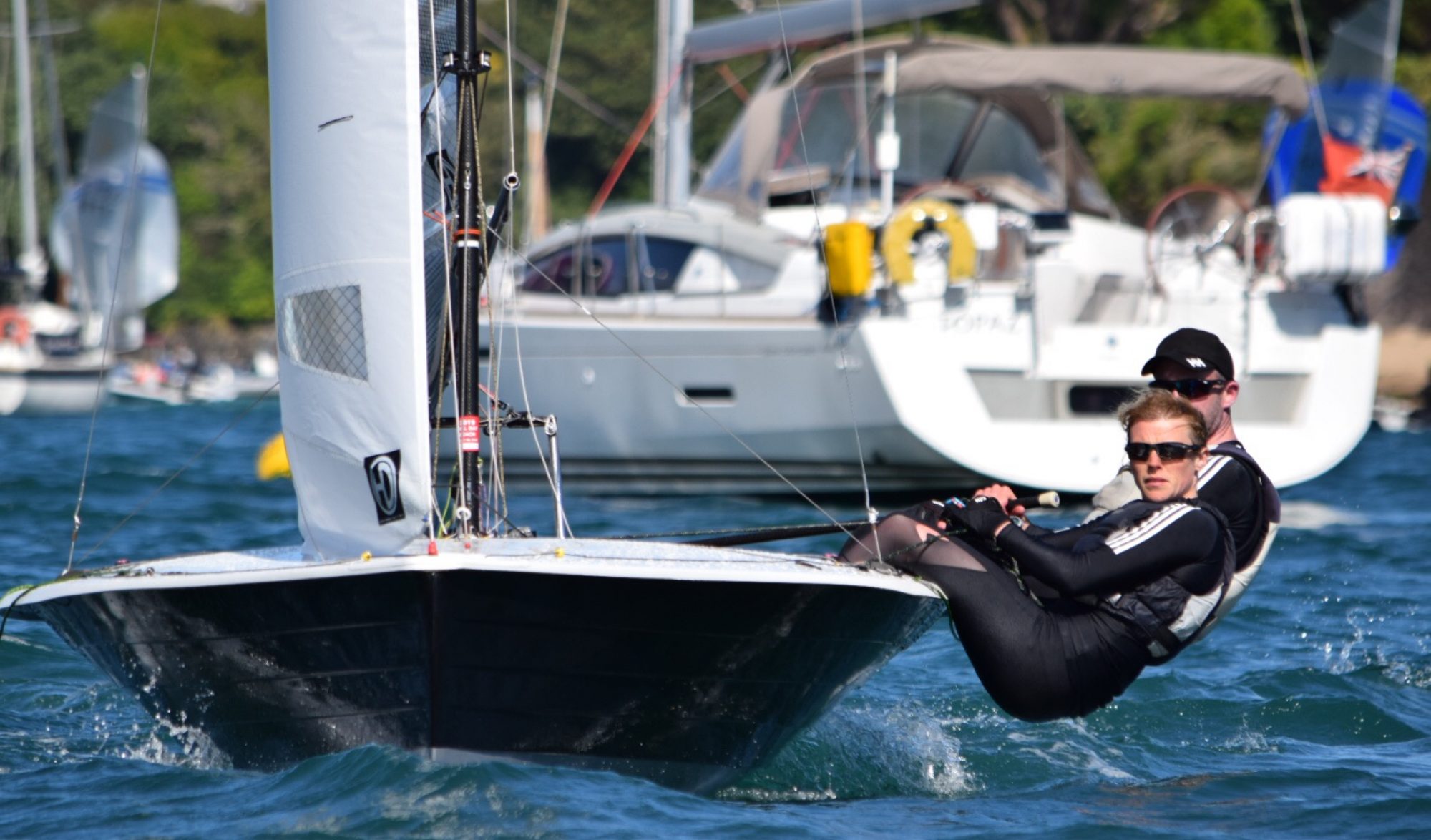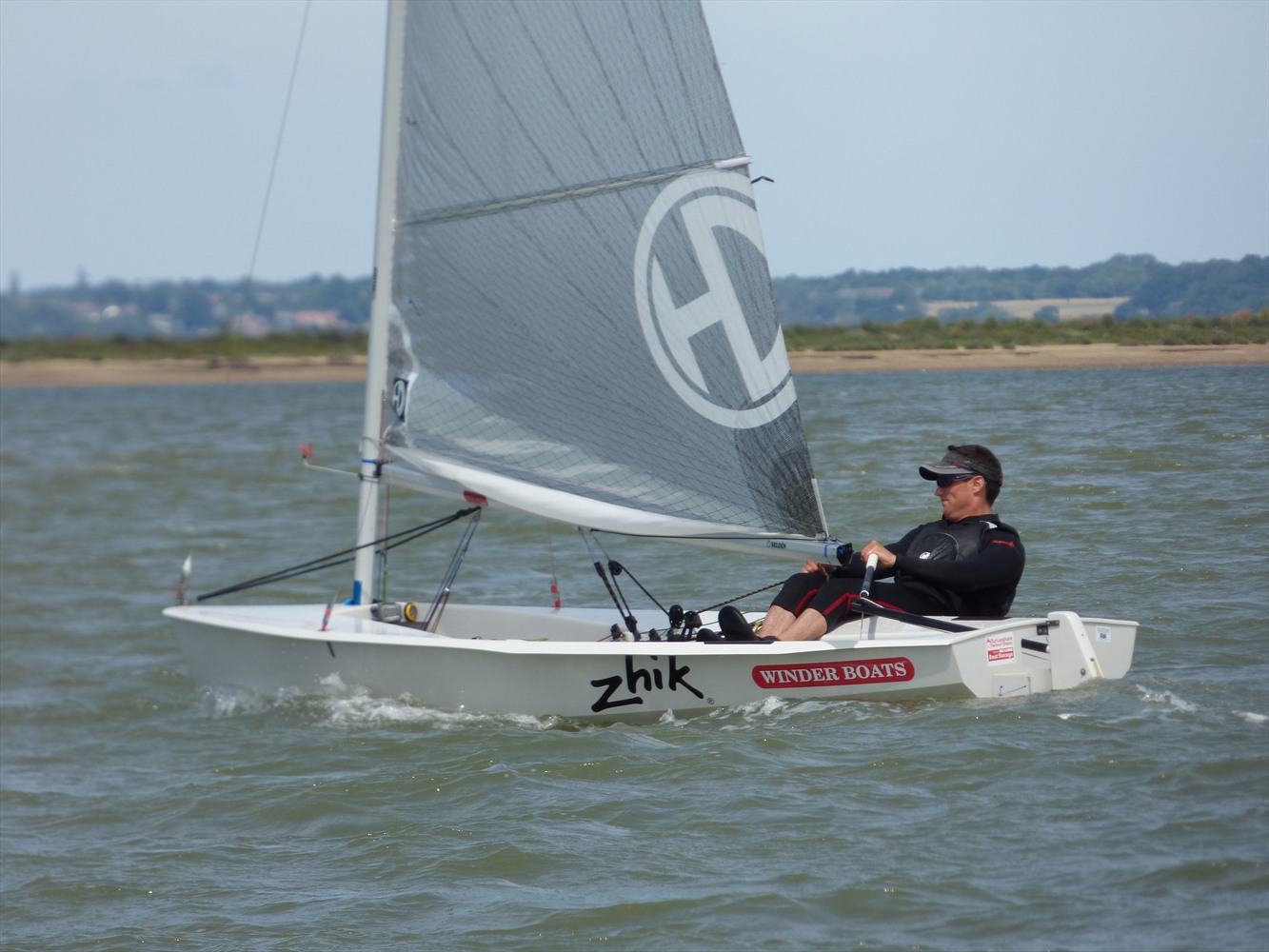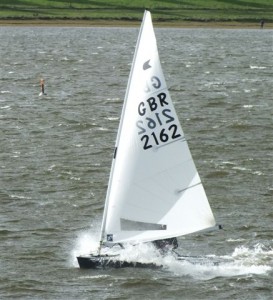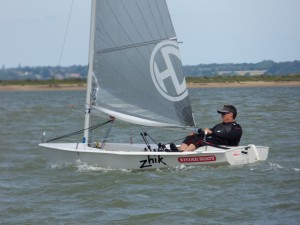Will asked me to write a bit on the differences between the OK and the Solo. I first sailed OK’s back in 2003 and was still sailing the Solo as well. Trying to get to grips with the OK highlighted a few areas that I could improve in the Solo.
The OK’s hard chine means it reacts much more to changes in heel angle and the raked rudder feeds back much more to the helm. Getting an OK downwind quickly requires a more subtle approach to body movement and sail trim. Using the rudder to change direction has a much more detrimental effect on speed in the OK. When I got back into the Solo after a couple of years in an OK, I’d gained a few kilos, but found I was quicker downwind, than I had been. I was using mainsheet trim and heel much more and letting the rudder follow the boat rather than trying to muscle the boat downwind.
The OK rules don’t allow the mainsheet to be trimmed from the boom downwind. The mainsheet has to be taken from the last block in the system. Along with jury boats at most big events, it’s largely removed the issue with 1-1 pumping, that many single handers suffer from. It’s also a lot more civilised! To me, it feels a lot more like a true test of skill to get an OK downwind quickly. Perhaps it’s something the Solo’s could try?
The OK mast foot and mast gate positions are easily adjustable on the water, so it’s fairly straight forward to tweak and test different set ups. Many people have a range of foot and gate positions to suit each condition. The basics are move the mast foot away from the board to go lower and faster in breeze and towards the board for more height / power in lighter conditions. I’m convinced this is an area that is worth exploiting in the Solo and did start to move the mast around in the boat for different conditions. I didn’t do enough Solo sailing to properly prove or disprove whether it worked, but did get to the point where I had enough range in the Solo rig to be able to sail upwind with the board fully down in all conditions.
Most OKs have toe strap mountings that are adjustable athwartships. I couldn’t believe how bloody painful it was when they were in the wrong place! A bit of fiddling to get my knees lined up with the side deck pads and hiking was almost pleasurable. Getting back into a Solo and not being able to shift the anchor points didn’t do much to cheer me up when my knees were screaming at me.
The OK’s don’t allow slot gaskets, so there’s a significant amount of turbulence in the case. Downwind it’s fastest to raise enough board so that the trailing edge just meets the back of the case. The reduction in turbulence more than makes up for the extra peril of only having enough board sticking out to stand on. It’s a good motivator to sort out being really precise with steering and trim downwind. In the Solo the gain isn’t as significant, but I’m certain there’s some.
Upwind the OK is very sensitive to mainsheet tension – a couple of clicks of the ratchet block can all that’s needed to go from slow to fast. Being able to accurately control and repeat leech tension is essential to having consistent speed. When I got back in the Solo, I calibrated traveller, kicker and mainsheet and started to build up settings for each condition. It definitely helped being able to get off the start line knowing I was on tested settings and knowing where to make a change if I needed more height or speed. I still haven’t found a way to avoid having to work hard to go fast though!




